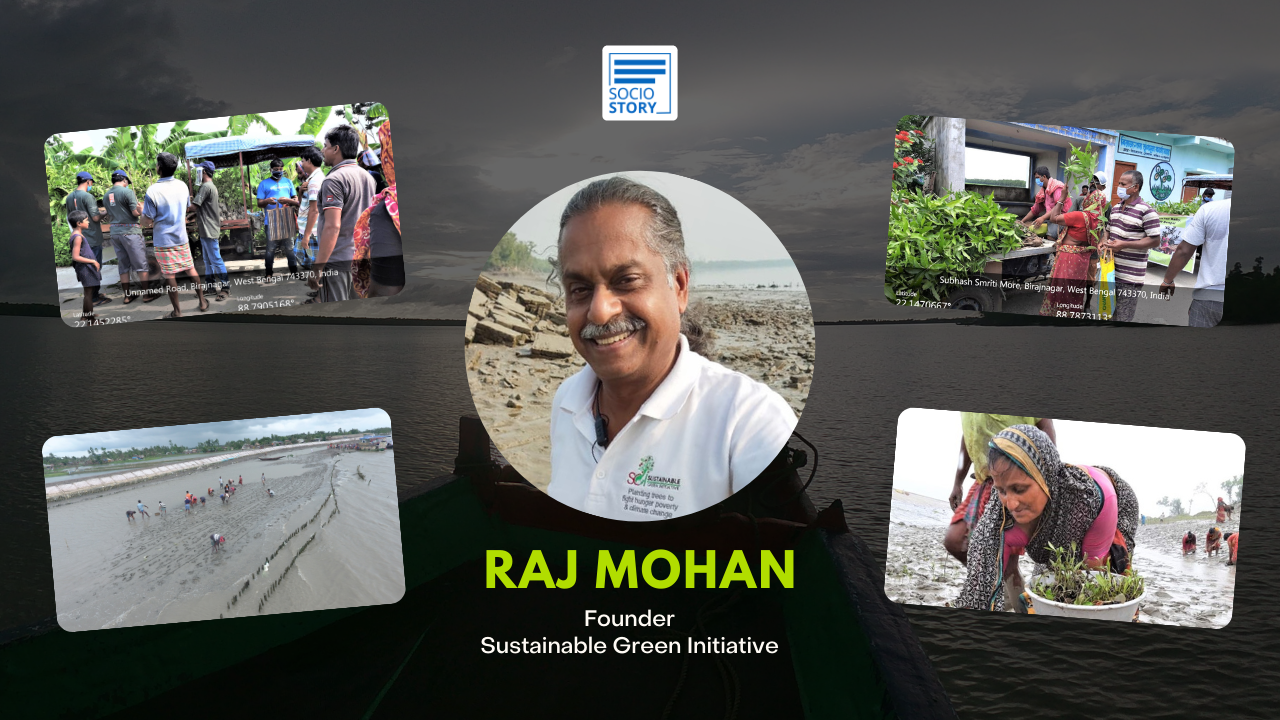Around 75 lakh mangroves to be planted in Sundarbans for restoring ecological balance
June 20, 2022, 12:18 p.m.

By: Reshma Jain
Around 3 years ago, the Indian Sundarbans was accorded the status of ‘Wetland of International Importance’ under the Ramsar Convention. Sundarbans is the 27th Ramsar Site in India with an area of 4,23,000 hectares. Located on the southwestern part of the delta, the Sundarbans constitute over 60% of the country’s total mangrove forest area and is now the largest protected wetland in the country. Home of the Royal Bengal Tiger, the Sundarbans encompass hundreds of islands and a maze of rivers, rivulets and creeks, in the delta of the rivers Ganges and Brahmaputra on the Bay of Bengal in India and Bangladesh.
However, the wetlands are disappearing rapidly, thanks to rapid urbanisation, industrialisation and other human interventions. The Sundarbans riverine estuaries, a UN world heritage site, is endangered by a rising sea level. Frequent cyclones, storms, are threatening the lives of the indigenous population that call these beautiful islands their home. Land restoration and mangrove planting not only protect their lives and livelihoods, but also act as humongous carbon sinks that can help us work towards a climatically sustainable world.
The Sundarban Reserve Forest (SRF) in India, located within the largest mangrove forest in the world, the Sundarbans, is now the largest protected wetland in the country. The Indian part of Sundarbans ecosystem consists of 102 islands, 54 of which are inhabited and the other 48 forested. The inhabited islands are protected by a centuries old system of ring embankments extending for over 3,500 km in length.
Sustainable Green Initiative (SGI) plants and nurtures (mostly fruit) trees across India to help alleviate hunger, poverty and climate change. In addition to having planted over 5 million fruit trees across 12 states of India, SGI has been working to address the growing concern of the Sundarbans estuaries which are under threat of submergence caused by a rising sea. Towards this objective, SGI has till date completed 1.5 million mangrove restoration and reforestation projects through mangrove afforestation in a multi-species environment to help communities learn and create a climate resilient and sustainable livelihood.
The Indian Sundarbans is home to over 4.5 million people, with very high population densities. This has led to pressure on the mangroves for land required for grazing, net-fishing on mudflats, prawn seed collection, and illegal fuel wood collection. The extension of non-forest land use into mangrove forest area is pronounced and reclamation of mangrove mudflat areas for fishery, farming and habitat encroachment is continuing. However, the annual cyclones and sea-level rise due to climate change have devastated these activities as well.
Speaking to Socio Story, Raj Mohan, Founder of SGI, said, “Although one way to protect the islands is to put concrete embankments, it is a short-term solution. In the long run, the best way forward is to plant as many mangroves as possible in the islands. We started in 2012 with 5,000 coconut trees planting which was done for ‘Tiger Widows’ so that they can nurture them. Since then, we have been continuously working in the Sundarbans and have planted close to 1.5 lakh fruit trees apart from 15 lakh mangroves. We also do fruit tree planting as people who live there need to find a perennial source of income. The Sundarban lands are extremely fertile so we plant fruit trees for small farmers to find a living in these islands.”
Adding that the objective this year is to plant 75 lakh mangroves and 1 lakh fruit trees, Raj said, “The proposed mangrove planting will be done in the planting seasons of 2022-2023, with guidance and support of the Bali based WPSI headed by legendary tiger conservator Anil Mistry and with support from local forest officials, village panchayats and student communities; all of whom will need to lead the race for creating sustainable livelihoods and resilience from the vagaries of manmade climate change.”
Raj further shared that enhancing biodiversity, establishing ecosystem functions to protect the islands and the populace from sea erosion and creating wave and wind protection are key objectives of the project. While this reforestation activity will offer an immediate economic stimulus, it will also help protect important livelihood functions of local communities while addressing climate adaptation benefits and addressing climate change impacts.
Restoration of the mangrove ecosystems in the West Bengal area of the Sundarbans can contribute to community climate resilience and climate change adaptation while helping biodiversity conservation and absorption of Greenhouse gas emissions. Sundarbans mangrove restoration project has the potential to plant up to 10,000 hectares of mud flats, barren and deforested lands.
A community-based approach to ensure success, Raj says that:
• Continuous meetings and consultation and sensitization of communities, with written affirmation from heads of village panchayats to ensure successful mangrove restoration after planting.
• Explain the reforestation objectives, benefits for the community.
• Local employees are appointed as Vriksha Sevaks and VrikshaRakshaks to execute, supervise the works undertaken.
• Regular community meetings and awareness camps to start timely seed collections, nursery preparations, and plantation. Continued meetings with Panchayats, policymakers at all administrative levels such as Forest Conservators, district magistrate, forest, government and police officers to update and coordinate mangrove conservation activities in the Sundarbans.
Important : If you are making an impact in the world, Please send us your story at : sociostoryfoundation@gmail.com and we will try to cover you.